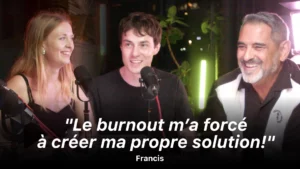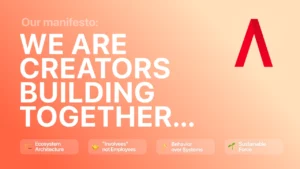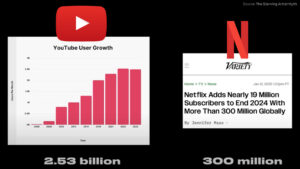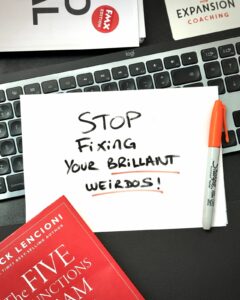Intelligent Burnout?
At 1:12 of the interview with Jonathan, he said something that made me stop the recording for 30 seconds.
We were talking about his return to work after his burnout. He went back to Sid Lee, excited, motivated… and he resumed working 80 hours a week.
“I hadn’t healed,” he told me. “I was still using work as a compensation.”
This moment struck me because it’s exactly the trap that 90% of people who “recover” from burnout fall into: they fix the symptoms, not the system.
Jonathan Belisle
Jonathan Belisle is not a wellness coach selling you positive affirmations.
He’s a designer who spent 15 years optimizing user experience for millions of people at Sid Lee and other hot agencies. The success of Wuxia the Fox, a Ted Talk. He won awards. He found success.
And at 27, his body told him, “We’re stopping everything.”
It wasn’t a paralyzing depression. Just a complete shutdown of his system. A one-year sabbatical. A forced retreat.
Now in his fifties, he works 30 hours a week with more impact than at his 80 hours back then. Here’s how.
Step 1: Observe
The first thing Jonathan did, and it’s counterintuitive, is he stopped trying to “fix himself.”
Instead, he started taking notes. Literally, on paper.
Where was his energy rising?
- In a café with background noise
- Walking for 8 hours with no destination
- Talking with strangers at his art events
Where was his energy dropping?
- In a silent office
- In Zoom meetings
- When he said yes to projects just for validation
For 2 weeks, he just observed. Didn’t judge, didn’t correct. Just noted.
Application for you
Freelancer: note in what type of contract you feel alive vs. zombie. Corporate client who micromanages? Startup giving you free rein?
Employee in transition: note which moment of your day gives you energy. It might not be the job type, it might be the environment.
Entrepreneur: note which tasks drain you even if they are “important.” Maybe you should delegate your accounting, not your branding.
Common pitfall: judging your preferences. If meetings drain you, it’s a fact, not a weakness.
Step 2: Filter
Second discovery: his “irrational” behaviors were sending clear messages.
He consistently arrived late. Not from laziness, but from unconscious resistance.
One day, a colleague confronted him: “Being on time is a value. Not just a behavior. You’re sending a message that you don’t understand.”
It shook him.
He realized: his chronic lateness was his body saying “I don’t want to be here.” But instead of listening to the message, he fought the symptom.
Application for you
Identify a recurring behavior that sabotages you:
- Procrastination on certain types of tasks?
- Compulsive scrolling before starting to work?
- “Forgetting” deadlines for certain clients?
Don’t ask yourself “How can I stop this?” but “What message is my body trying to send?”
Concrete example
If you systematically procrastinate on financial reports: it may not be laziness, maybe you really hate it and should pay someone to do it.
If you “forget” deadlines for a specific client: maybe that relationship is toxic and your subconscious is protecting you.
Common pitfall: trying to discipline yourself instead of listening. Jonathan wasted years trying to be more disciplined. The real solution? Change the system, don’t force yourself.
Step 3: Clean up your relationships
It’s brutal.
After 20 years in his career, Jonathan asked himself the question: “How many of these relationships provide a true virtuous circle?”
The answer was uncomfortable. He had maintained professional “friendships” that only served his ego or illusion of a network.
Step 4: Optimize your performance
This is where it gets really interesting.
Because Jonathan didn’t just “recover.” He came back more performant. But differently.
I break it all down in detail in the article video (FR).
You will also discover in the full interview (FR):
- Why he needs to walk 8 hours a week to think clearly
- The “2019 yogurt test” to evaluate your network
- How he uses Time Boxing as a game of energetic Play-Doh
Creative Lounge / Coaching Invitation
If you want to apply this framework with support:
🔥 Creative Lounge
17+ creatives apply these principles together.
Ideal if: you want accountability without the motivational BS
💼 1-on-1 Coaching
I have 1 spots this month to tailor this framework to your unique situation.
Ideal if: you see the wall approaching and don’t want to wait to hit burnout to act. Or you’re post-burnout and want to rebuild intelligently.








